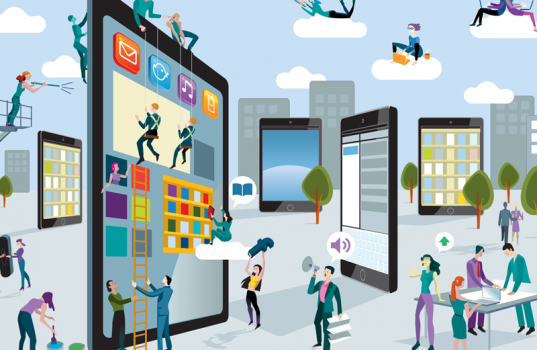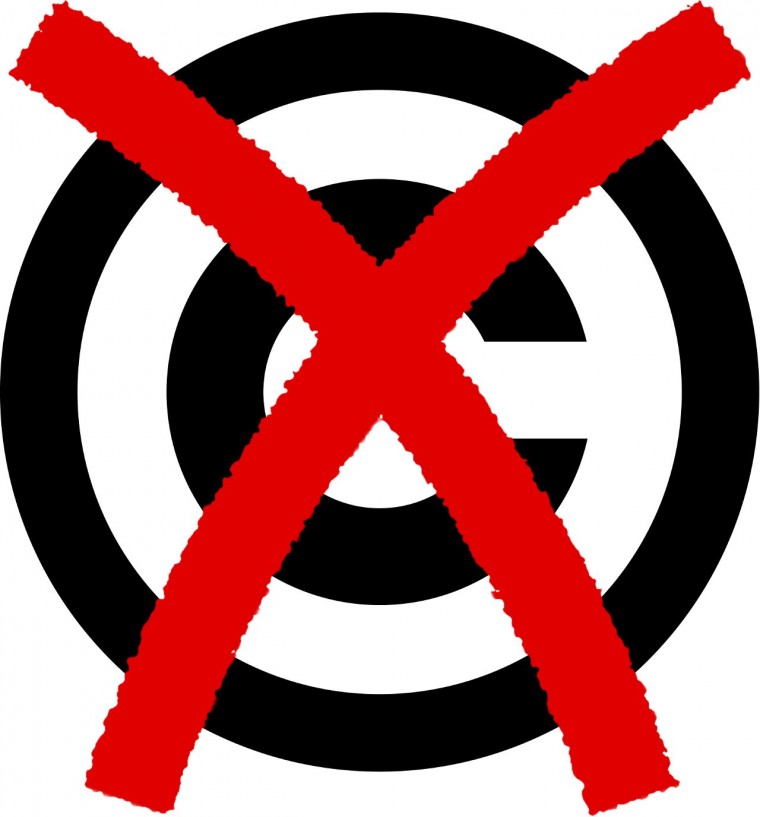‘The commons refers to natural and cultural resources that are shared by a community of commoners’ (Wittel, 2013). With the beginning of digital era, commons have revived in the form of digital ones presented by ‘the results of social production necessary for social interaction and further production, such as knowledges, languages, codes, information, affects, and so forth’ (Hardt and Negri, 2009). Digital commons is not based on past works but is collectively created by the community of people interested in the development of ‘non-market’ and ‘social production'(Benkler, 2007). The main feature of such repositories of information is its free access and opportunity to modify the resources (OnlineCreation, 2007).

Technology – Past, Present and Future – (Eaziloyalty, 2014)
The digital commons has emerged in the 1980-s with the rise of Open Source Movement and has been disseminated around the web in a short time. Its prime time has begun after Web 2.0 became a widespread phenomenon (Wittel, 2013).
Typically, information created in the digital commons is licensed by GNU GPL and one of the Creative Commons licenses. One of the most popular current examples of digital commons is Wikipedia, WikiLeaks, OpenStreetMap, Flickr webistes as well as public software repositories like Git or Subversion.
What is commodification?
‘Commodification is the process through which something becomes a commodity – a private good, produced through a process which is mostly driven by market needs or considerations’ (De Filippi and Vieira, 2016).
Conflict
However, there is a conflict between the digital commoners and the companies that are willing to commodify communal resources. For instance, Google used the content generated by its users via Google Map Maker for its commercial aims without returning any contributions back to the commons. It happened due to the fact that the license that Google uses for this project is not compatible with other ones, for instance, with the license of OpenStreetMap data (Maron, 2010). This means that users are becoming free labour without even knowing about their exploitation (Fish and Srinivasan, 2011).
‘Free labour is the moment where this knowledgeable consumption of culture is translated into excess productive activities that are pleasurably embraced and at the same time often shamefully exploited’ (Terranova, 2003).
The brightest examples of free digital labour and commodification of commonly created content are social nets where users generate content for fun or for creating their identities while big corporations like Facebook use it to get revenue by selling their personal information to advertisers (Petersen, 2008). Moreover, the communities of such cloud-based platforms do not have a full access to the existing content as it should be in digital commons. Nonetheless, ‘cloud operators can determine – by contractual or technical means—the manner in which content can be produced and the extent to which it can accessed, used, or reused through the user interface’ (De Filippi and Vieira, 2016).
A long but a useful video on the topic of ‘Digital Commons and Commodification’
